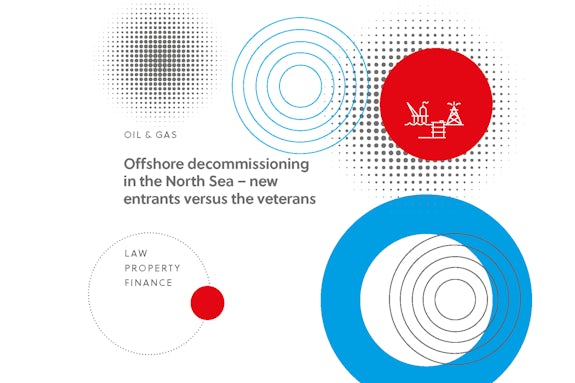There has been much said in recent years about the “old guard” of the North Sea “selling up and getting out” and over the past 10-15 years there has been an emergence of new entrants, hungry to extract the last remaining drops from ageing reservoirs.
Whilst enhanced oil recovery (EOR) was a somewhat sexy topic for these new entrants, decommissioning of the associated infrastructure was rarely at the forefront of discussions/announcements, publicly at least.
Can the “old boys” simply sell up and sail off into the sunset?
Not really. Whilst public perception may sometimes be that oil conglomerates are attempting to wash their hands of their liabilities, the regulatory framework and the s.29 regime under the Petroleum Act 1998 in particular, ensures that they can’t simply walk away. [See my previous blog on this subject]
Of course, the oil companies understand this and will not attempt to do so.
How do the exiting companies ensure that the decommissioning liabilities are covered by the new entrants?
Mainly by security being taken out against future decommissioning liabilities. It has long been the practice for the purchaser of an oil/gas asset to provide security to the seller in relation to decommissioning liabilities. This can take the form of (amongst others):
- cash – placed in a trust fund
- letter of credit
- bond
- parent company guarantee
Traditionally, this was done by bi-lateral decommissioning security agreement (DSA), which was simply between the seller and the purchaser. It has become more commonplace for field-wide DSAs to be put in place between the current and past licensees and and/or potential s.29 notice holders.
The amount of security will reflect the estimated cost of decommissioning, the timing of when the security is to be taken out will depend on the projected cessation of production, and the arrangements will be agreed on a post-tax or pre-tax basis. Post-tax DSAs have become more common since the emergence of the Decommissioning Relief Deed.
Why should the new entrants take on the full decommissioning burden?
Oil Company A has been producing oil from asset X since 1972 but asset X has become uneconomic for Company A. Company B, with its EOR capabilities believes it can continue to produce oil economically from asset X for another 5 years.
If Company B is producing for 5 years from a total of over 50 years, why should it be responsible for the decommissioning and the ongoing monitoring of anything left in situ? The simple answer to this is that it should be reflected in the price and it may be that Company A even pays Company B to take asset X off its hands.
An alternative to this has become apparent over the past few years and that is that Company A may not sell asset X on the cheap to Company B, but it may be agreed that Company A retains the decommissioning liability (from a commercial perspective).
Instead of the new entrant taking on all the responsibility, indemnifying the exiting company and placing decommissioning security – the commercial deal may reflect the exact opposite, flipping the traditional model on its head.
Why would the exiting company not just go straight to decommissioning?
Until very recently, Maximising Economic Recovery (MER) from the UKCS basin was one of the main priorities, so there was pressure to not leave hydrocarbons in the ground wherever possible. This, together with the fact that companies sometimes prefer to push decommissioning liabilities “out to the right” has seen them transfer the asset allowing someone else to maximize the recovery before taking it back for decommissioning.
It may be a risky strategy to cease control of the asset prior to the decommissioning phase but it is more prevalent than you may think. This has facilitated M&A deals and allowed new entrants into the UKCS over the past few years.
What does this mean for the taxpayer?
From a regulatory (and taxpayer) perspective, you could argue it has strengthened the capability of the industry financially to take on decommissioning projects, simply because there are more companies on the hook under s.29 notices for decommissioning than there otherwise might have been.
If you would like further information on the topic discussed in this blog, please contact Calum Crighton by email: ccrighton@gilsongray.co.uk or by phone: 0131 285 7841 / 07825 884 961. You can also view Calum’s profile by clicking here.








